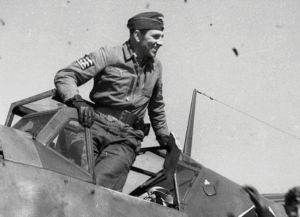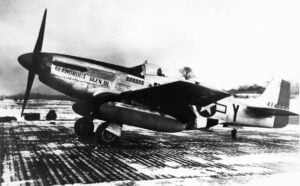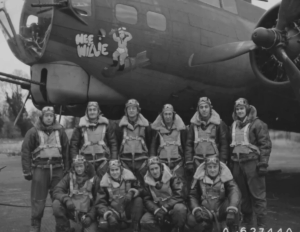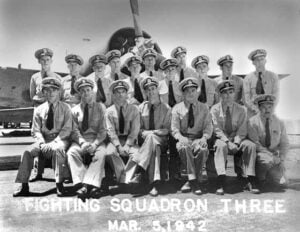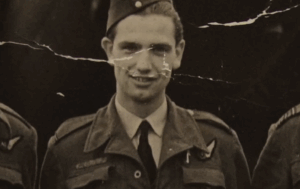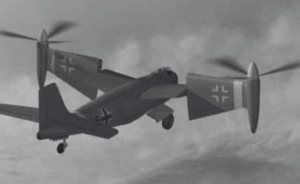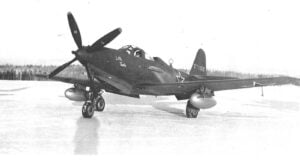The Incredible Story of the “Paper” Fuel Tank That Took Mustangs to Berlin and Back
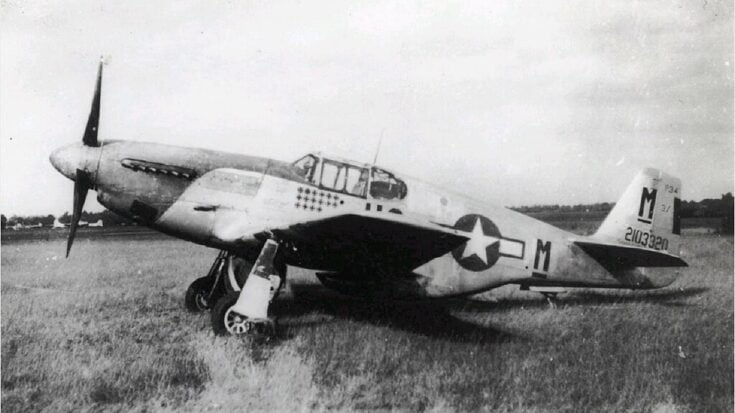
Photo by Imperial War Museum, Public domain, via Wikimedia Commons.
A Simple Idea That Changed Air Warfare
In the early months of 1944, the U.S. Army Air Forces were struggling to protect their bombers deep inside Europe. Their fighters, though powerful, could not fly far enough to escort bombers all the way to Berlin. When the Thunderbolts turned back for England, German interceptors struck freely, bringing down hundreds of Allied airmen. Losses reached staggering levels—on missions like the Schweinfurt raid, nearly a quarter of the bombers never returned.
It was a crisis that demanded an unlikely solution. Engineers and officers searched for ways to extend fighter range without using up scarce metals or compromising performance. In Britain, a quiet experiment offered a curious answer: a fuel tank made of paper. The tanks were built from laminated craft paper soaked in resin, molded over wooden frames, and sealed with a thin coat of protective lacquer. They were so light and cheap that they could be used once and discarded. What started as Britain’s answer to aluminum shortages soon became one of the most practical ideas of the war.
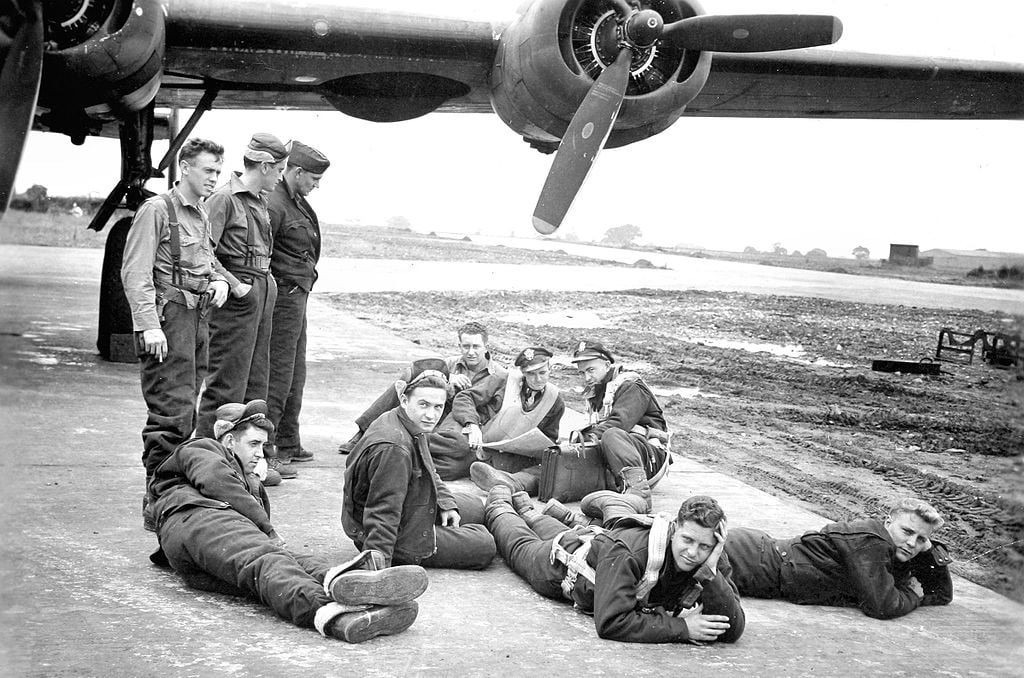
The First Tests and the Leap to Berlin
American engineers at the Eighth Air Force tested the “paper tanks” early in 1944. Major James Goodson flew his P-47 Thunderbolt with two of them under the wings on a flight to Hanover. The tanks worked perfectly—no leaks, no structural failures, and a significant boost in range. The innovation was then paired with the new P-51 Mustang, an aircraft already known for its efficiency and speed.
When fitted with two 108-gallon paper tanks, the Mustang’s range nearly doubled. Suddenly, for the first time in the war, a single-engine fighter could fly from England to Berlin and back. On March 4, 1944, American pilots took off with the brown, resin-coated tanks hanging beneath their wings. The ground crews had filled them only hours earlier, as the gasoline would eventually weaken the paper after five hours. Still, that was enough for a round trip across Europe.
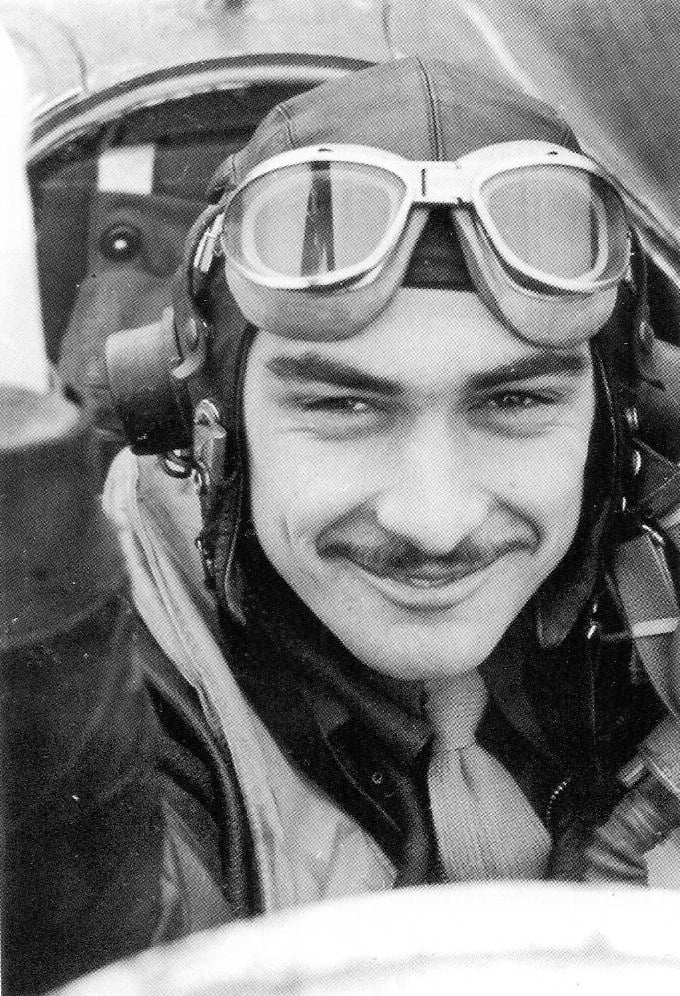
The Turning Point in the Air War
When the first Mustangs appeared over Berlin that day, both German pilots and Allied crews could hardly believe it. For bomber gunners used to facing attacks without protection, the sight of friendly fighters above them was a relief they never forgot. From that mission onward, the air war changed dramatically. Bomber losses dropped from around 7 percent per month to barely 2 percent by mid-1944.
The paper tanks offered other unexpected advantages. They were more aerodynamic than metal ones, reducing drag. When hit by gunfire, they didn’t explode—they simply tore and leaked. After being dropped, the tanks would eventually dissolve into the soil, leaving behind only small metal fittings. Each tank weighed only 50 pounds empty but held enough fuel to carry a Mustang hundreds of miles further into enemy airspace.
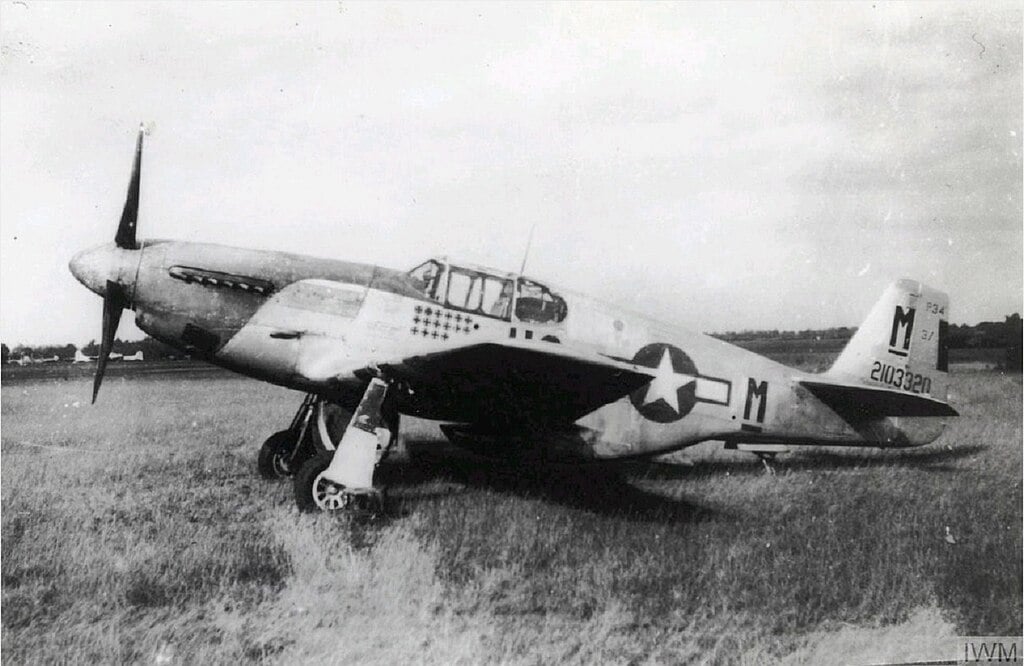
A Legacy Built from Paper and Glue
By summer 1944, Allied factories were producing tens of thousands of these disposable tanks. The Bowater Lloyd paper company, once a newspaper printer, turned its machines to war production. Women worked long shifts laminating and sealing the fuel containers by hand. Their craftsmanship meant the difference between a successful escort mission and disaster.
The Germans attempted to imitate the design, but their economy was already collapsing. Aluminum shortages, disrupted supply lines, and relentless bombing crippled their ability to copy such large-scale production. By late 1944, the Luftwaffe was losing pilots faster than it could train replacements, while Allied fighters roamed freely across the continent.
After the war, the simple paper tank continued to influence technology. The lamination and bonding methods developed for it became early foundations for composite materials and printed circuit boards. In the words of General James Doolittle, “The extension of fighter range through the British-made paper tanks was the single most important tactical development of the air war in Europe.”
From recycled newspaper to high skies over Berlin, the “paper” fuel tank proved that even the simplest materials—when used with ingenuity—could change the course of history.













